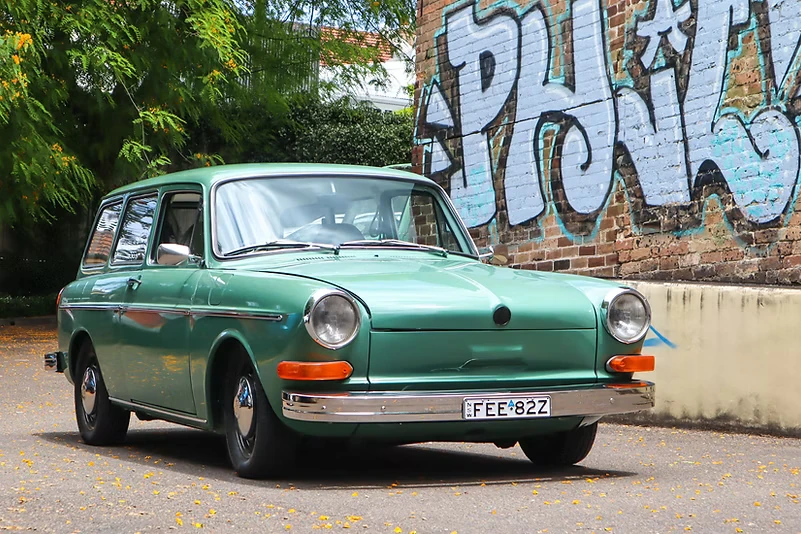Electric vehicle conversions are nothing new, people have been converting cars to run on electricity for decades. Interest initially surged during the environmental and energy crisis of the 1970s and 80s, a spark that ignited the Australian Electric Vehicle Association (AEVA) into existence in 1973.
Fast forward to today and modern electric vehicles are creating more demand for electric car conversions. Several dedicated workshops for EV conversions opened within the last few years, providing options for those looking for a unique electric car or classic car owners interested in electric power.
The Driven recently visited one of these workshops, Electrogusto in Sydney, and sat down with partner Nick Cummins to understand exactly what’s involved in converting a classic internal combustion car over to battery electric.
Nick describes himself as a modern day hot rodder, combining his love of old cars with the reliability of electric vehicles to make classic cars more accessible and enjoyable for their owners to drive.
While it may seem straightforward to replace a petrol engine with an electric motor and petrol tank with a battery pack, Nick explains “There’s also a hundred other different components that work in that ecosystem to make the car function, and also be safe and modern. So that’s where it becomes quite complex.”
What sorts of cars are converted?
A conversion begins with the car itself and gaining a deep understanding of what the customer wants, how much power and range they need, do they want it repainted, a new interior or luxury features such as heated seats and so on.
Most conversions are based on either classic cars or special cars that have a lot of sentimental value for their owners, who want to be able to continue driving them for years and pass them onto kids or grandkids to enjoy. An average conversion costs roughly $100,000, so there is usually a very strong bond with cars that are converted.
Some examples currently undergoing conversion in the workshop are a 1971 Porsche 911, an ex-army Land Rover Perentie, 1940s Fiat Topolino and the Citroën HY van below that the owners will eventually use to serve gelato at weddings and other events.
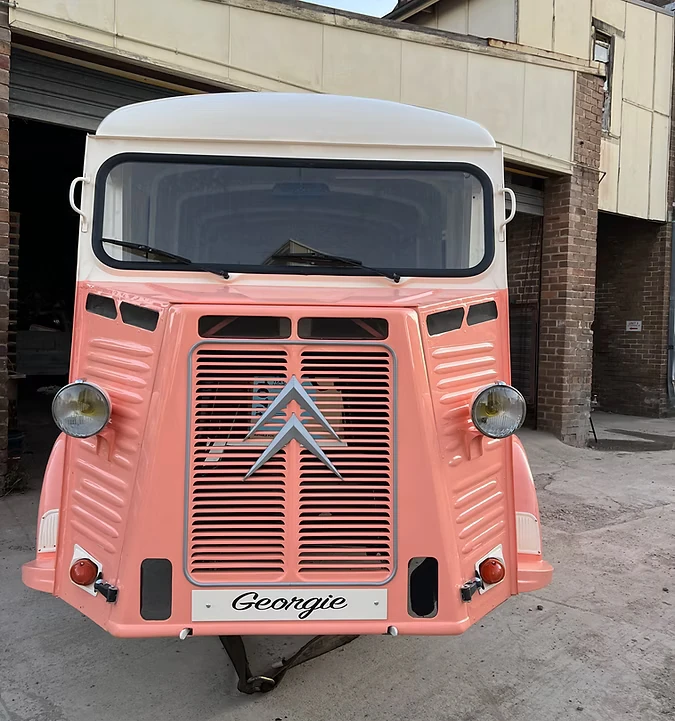
Different choices for electric motors and batteries
The next step is for Electrogusto to learn as much as possible about the car before any work begins. For example, how much power it produces, what the brakes are like, how much it weighs and the weight distribution over both axles. The end result needs to stay within a certain range of the OEM parameters to be certified and registered for road use.
Several different types of electric motors are used, depending on what type of axle the car has and the space available for the new motor. Commonly used motors are from old Tesla or Nissan Leaf vehicles, as well as the US made NetGain HyPer 9 or other Chinese brands of electric motors.
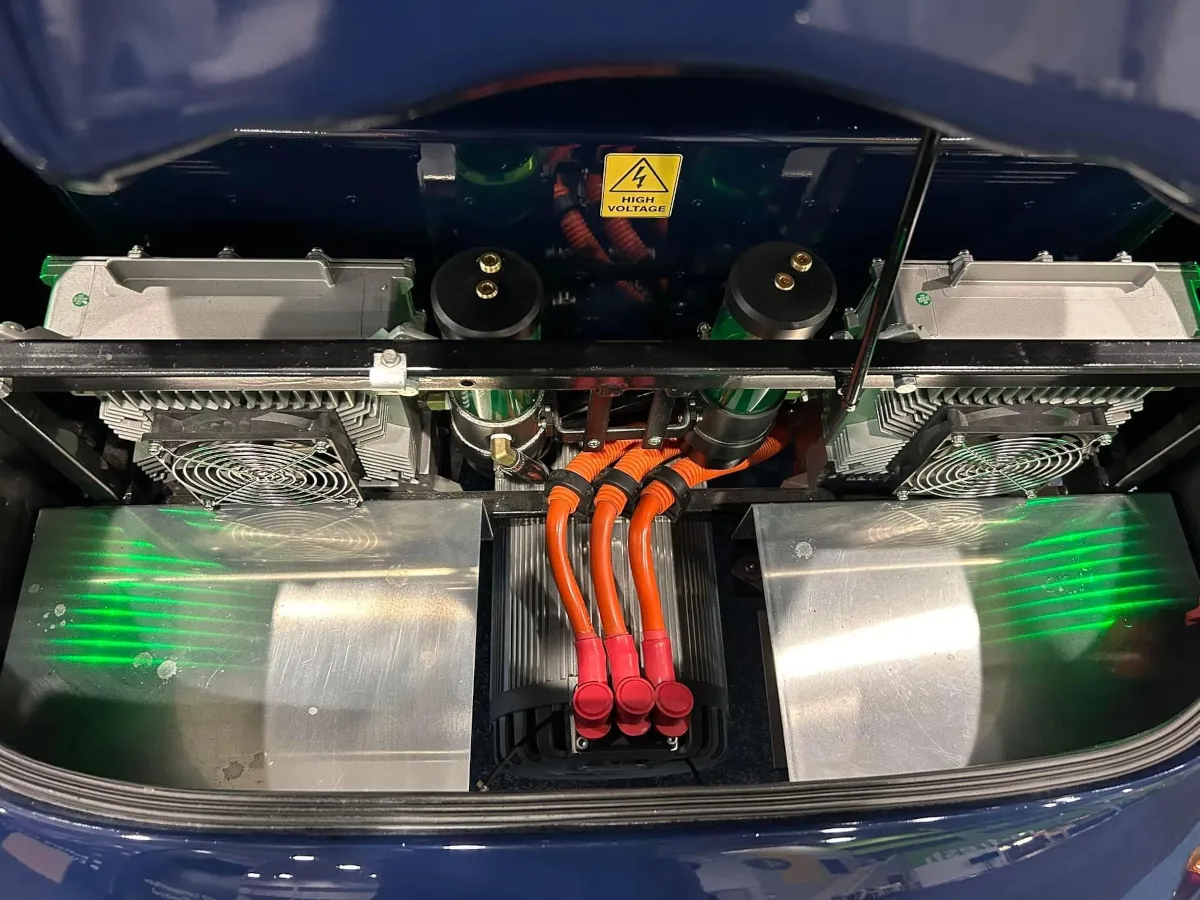
Motor choice determines how much space there is left over for battery packs plus the required weight distribution for the battery packs. Most vehicles converted by Electrogusto have around 200 km of range, which is ideal for most customers who mainly use their cars on the weekend or as a second car.
Similar to the electric motors, several different brands of new or repurposed batteries are used. China Aviation Lithium Battery (CALB) batteries are sourced from Lithium Power in WA, supplied in modules about the size of a shoe box which can be grouped together and positioned within the space available.
Tesla batteries are sometimes repurposed from wrecks, after being tested by suppliers to be safe and functioning correctly. However, Tesla battery modules are growing in size and newer vehicles have structural battery packs that cannot be taken apart easily for reuse, so different sources will need to be found in future.
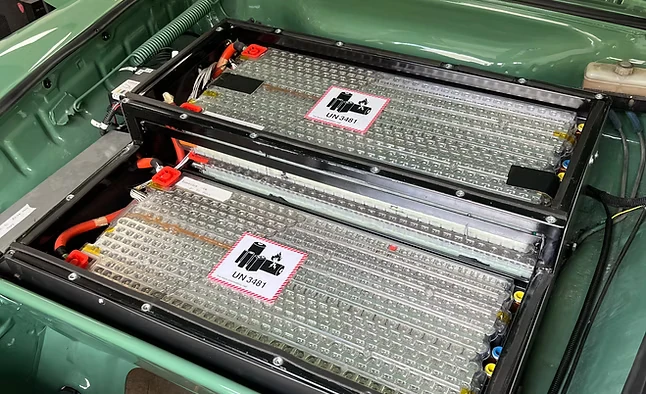
“Then we work out the weight distribution for the battery packs. We’ll scan a car in 3D, put it into CAD and mechanical engineers design battery boxes, brackets, motor mounts, everything to install all this stuff. It’s very often a giant jigsaw puzzle to find space for everything,” says Nick.
What else needs to be changed or upgraded?
Space is at a premium with EV conversions, quite different to vehicle manufacturers with the luxury of a ground up designed EV with a skateboard chassis. It usually takes many planning meetings, working closely with independent engineers that will ultimately sign the finished conversion off for registration.
Depending on the state of the original vehicle and customer preference, body panels may also need to be restored to their former glory. Additional work may be required to strengthen the chassis and upgrade the braking system to make the cars safe as well.
In most cases, the electric motor is connected to the original gearbox via an adapter. If the power output of the new motor is much higher than the original petrol engine, the gearbox won’t handle the additional load and is removed, replaced with a simple gear reduction setup instead. It is also easy to reduce the power output from the electric motor if desired.
For conversions with an original gearbox, they can be left in 3rd gear for example and there’s no need to use the clutch while stopped as there is no engine to stall. Drive, neutral and reverse gears can be selected via new buttons installed on the dash instead.
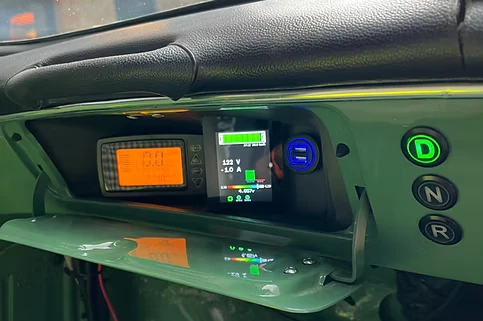
A tradeoff exists between simplifying things and balancing the desire to keep things original. Fewer parts modified along the way also means there is less work to certify and register the car at the end, so this is another factor to consider.
The build process begins
Once planning is complete, the build process begins with finding the best parts or designing and manufacturing their own parts along the way as necessary. Electrogusto prefers to use OEM parts from vehicle manufacturers wherever possible, as millions has already been spent developing and testing those parts to ensure they are safe and reliable.
As Nick described earlier, the process can be complex and things are often discovered along the way that require a novel solution. For example, new 12 V wiring loom and in some cases a whole new 12 V system. Braking systems, power steering, electric accelerator pedal and new park brakes are also commonly swapped over.
Legally a car must have a demister to be registered, and the original cars typically use waste heat from the engine or exhaust to heat up air that is blown onto the windscreen. Therefore a new 12 V heating system needs to be installed somewhere and often requires custom made 3D printed ductwork.
How long does a conversion take?
All up the conversion process takes around 6 months. The end result is a classic car that not only looks fantastic and people love to see on the road, but is fun and simple to drive as well. Maintenance is also greatly reduced compared to the original components, meaning owners can spend less time tinkering and more time enjoying their cars.
On a short drive near the Electrogusto workshop in Nick’s 1973 Volkswagen Type 3 squareback wagon, multiple people told us how great the car looks as we were stopped at traffic lights or gave us big smiles and friendly waves as they drove past.
Converted electric cars incorporate some great driving aspects of modern EVs such as adjustable regenerative braking with one pedal driving modes. Usually the interior is restored beautifully to keep the feel of the original car, so sometimes new gauges are kept hidden, but can be revealed from behind a panel with a button press.

Future of EV conversions
When I asked Nick where he sees EV conversions going, he believes they will remain niche, but the market could grow as more people want to keep their old cars on the road and find it harder to track down spare parts or mechanics with the knowledge to maintain them. Future vehicle emissions rules could also persuade more people to convert their old cars.
Vehicle to home (V2H) and vehicle to grid (V2G) is also something that Electrogusto are keen to add to their vehicles in the future. This makes perfect sense given that many of these cars will be well kept sitting inside garages or off-street parking, with the opportunity to make their battery packs useful while not being driven.
If you have a car you’d like to convert to electric, get in touch with Electrogusto or visit their workshop in Petersham, Sydney. They will also have cars on display at Everything Electric in Sydney between Friday March 7 and Sunday March 9, 2025.
For the full interview, and a discussion about the year that was (2024), and the year what will be (2025), please listen to the latest episode of The Driven podcast here.

Tim has 20 years experience in the IT industry including 14 years as a network engineer and site reliability engineer at Google Australia. He is an EV and renewable energy enthusiast who is most passionate about helping people understand and adopt these technologies.

